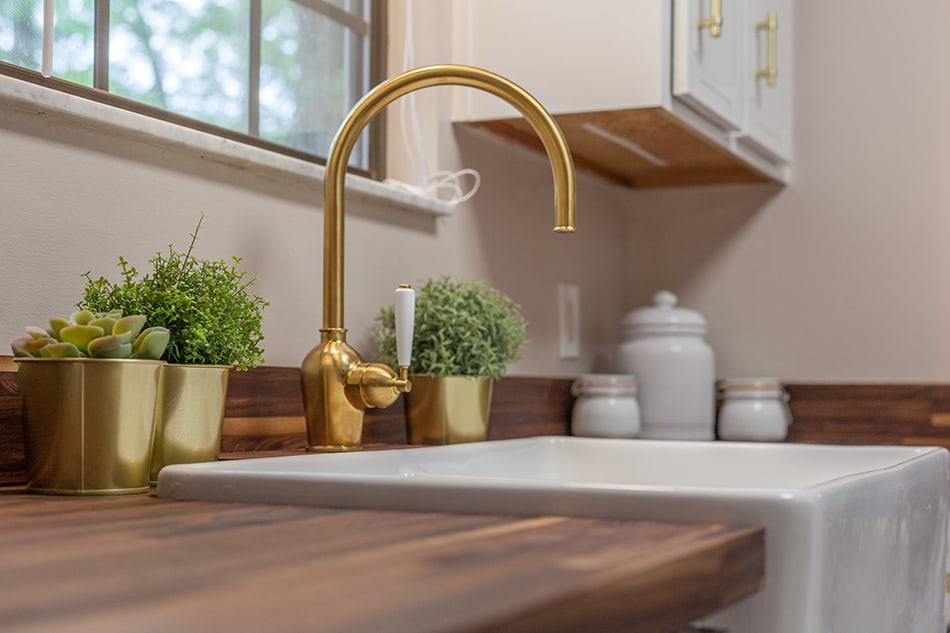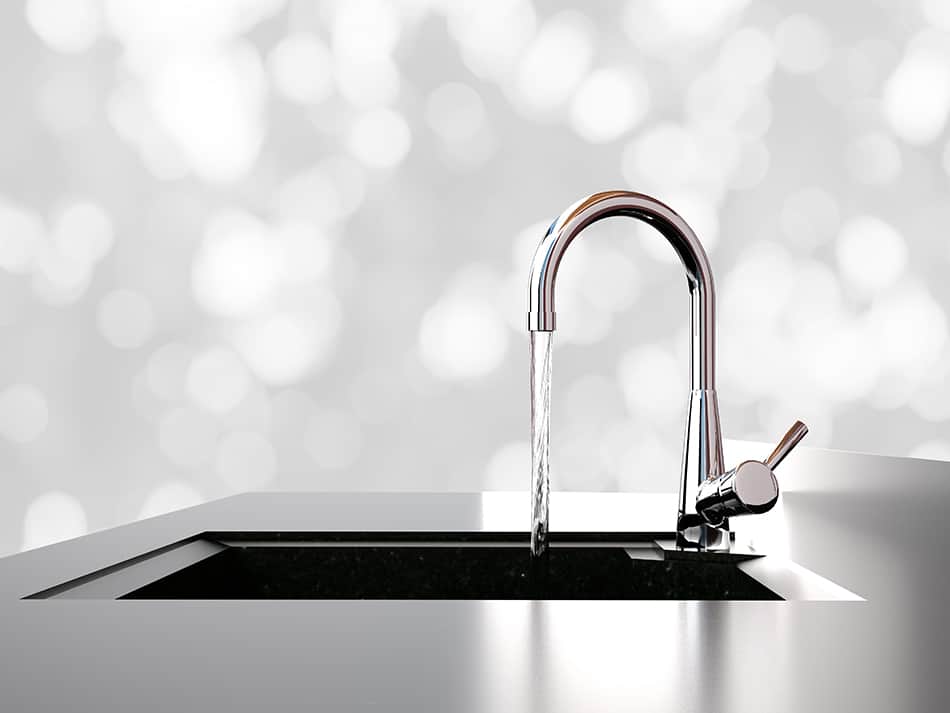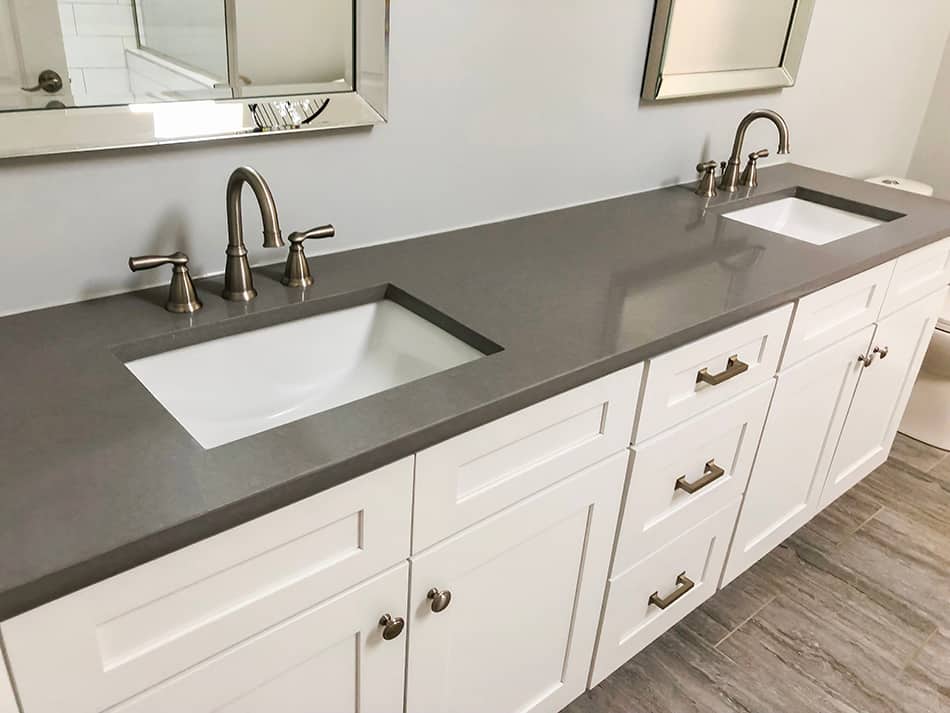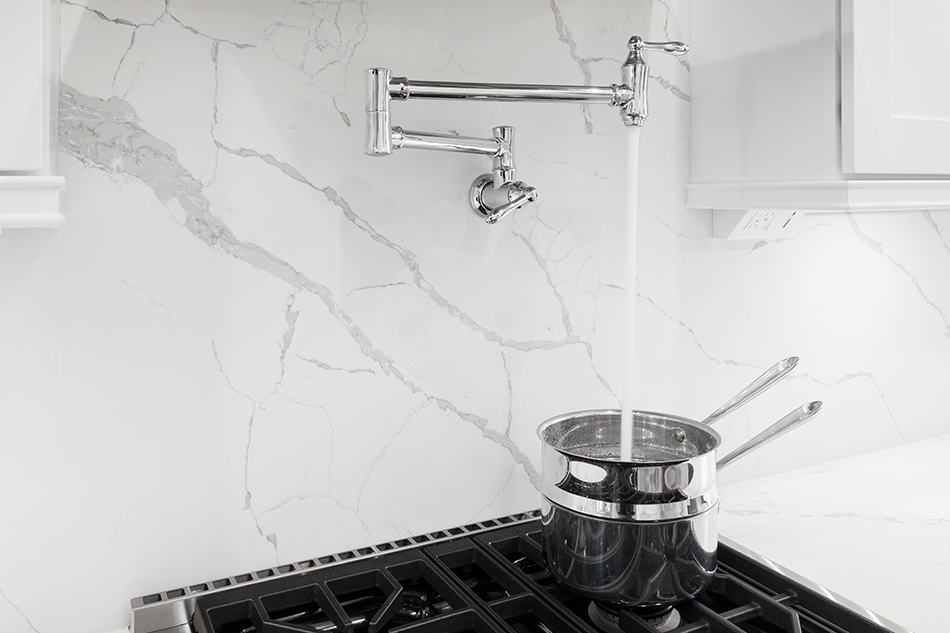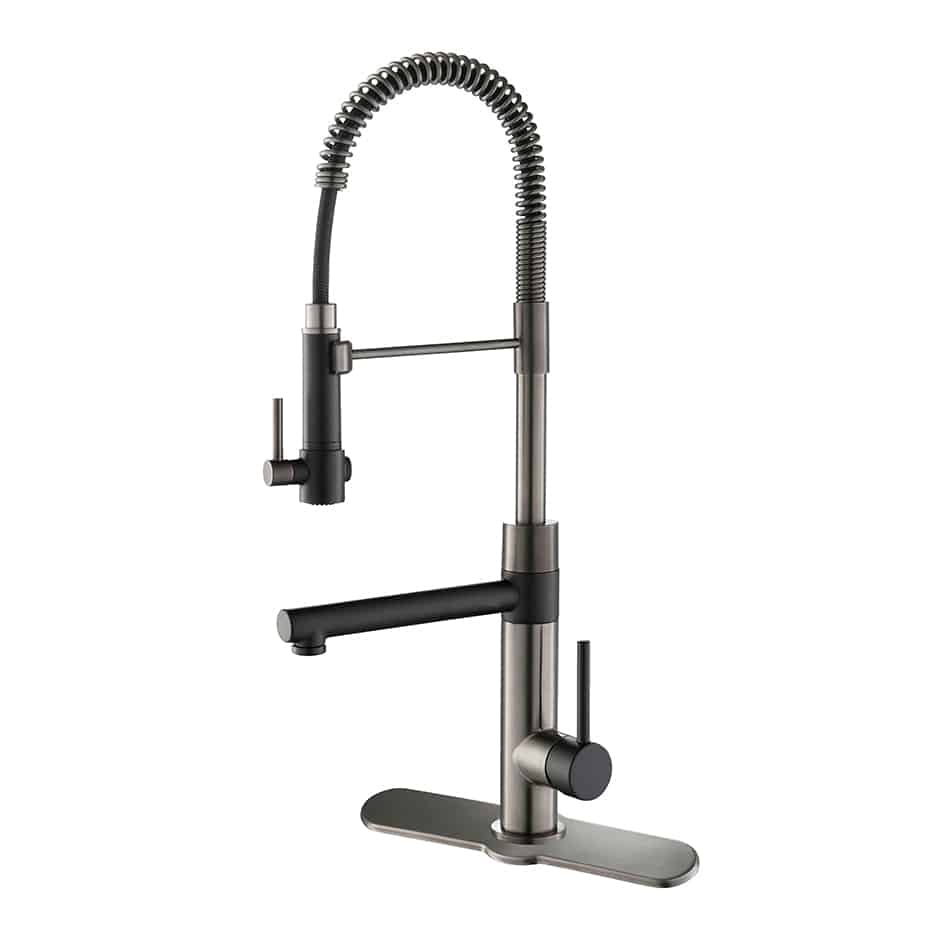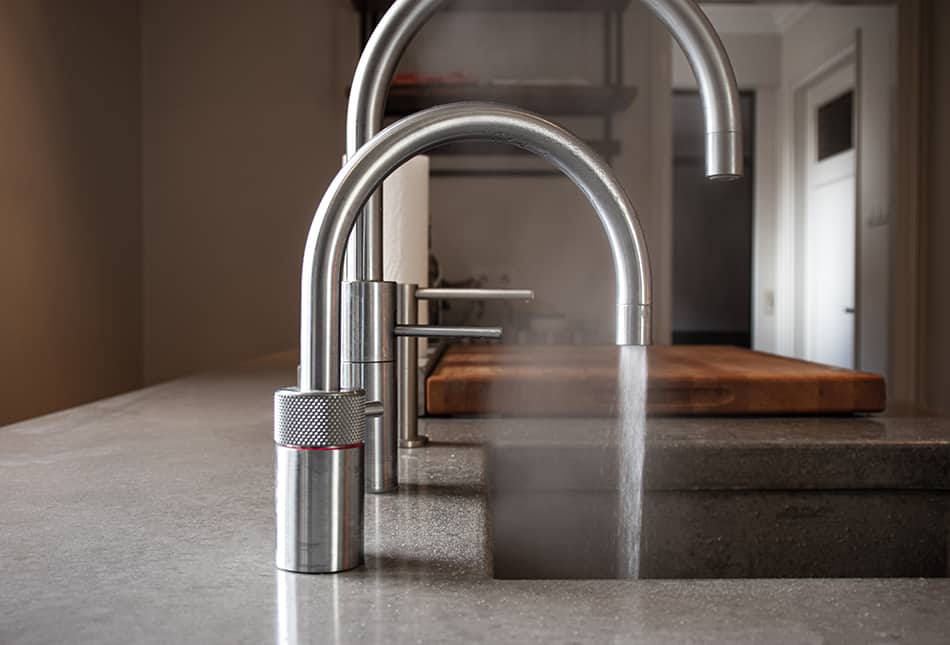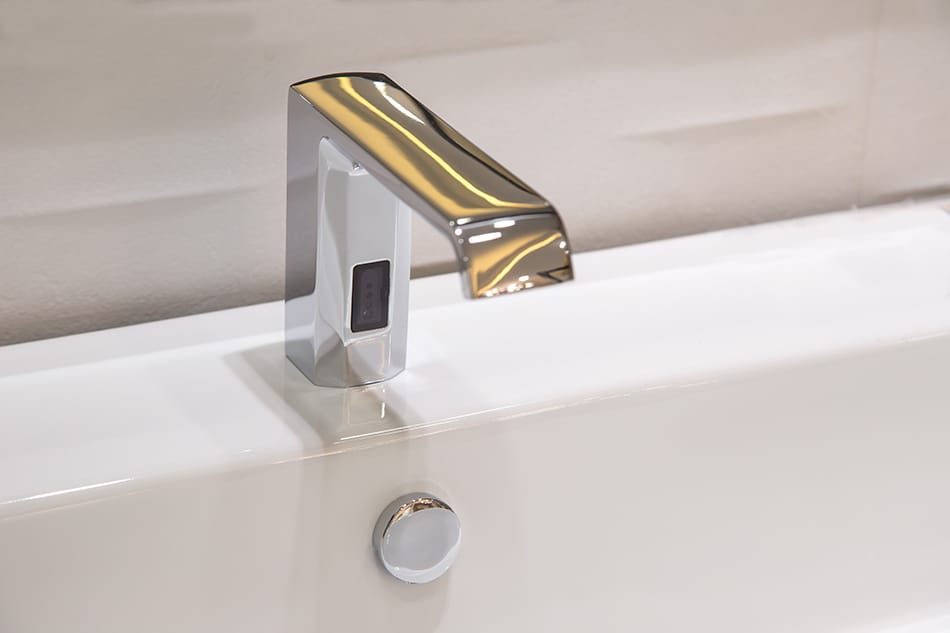Searching for a new kitchen faucet can be a daunting task with the seemingly endless options available today. The good news is you’re sure to find a tap that works and looks beautiful, no matter the design and decor of your kitchen.
Here are a few ideas of the types of kitchen faucets to consider.
Table of Contents
Pull-Out and Pull-Down Faucets
Pull-out and pull-down faucets are similar to each other, and sometimes the names are used interchangeably. Both have a wand connected to a hose that extends out from the tap.
Still, the main difference between the two is that the pull-out wand is pulled in an outward motion toward you. In contrast, the pull-down faucet is drawn in a downward motion towards the kitchen sink. The pull-out wand is installed separately on the counter close to the sink or integrated into the spout. The pull-down sprayer is only ever integrated into the faucet.
Deciding on whether a pull-out or pull-down faucet is best for you depends on your kitchen setup. Because a pull-out wand has a bigger handle, you’ll find it helpful if you want better control when holding it. On the other hand, a pull-down faucet’s handle is smaller, but its design is ergonomic, and the action of pulling it down may feel more natural.
You’ll also want to consider your kitchen sink’s water pressure and depth when making your decision. Pull-out wands may be better in a kitchen with a smaller sink depth and medium water pressure. The water pressure from a pull-down faucet is typically stronger, so you would get more splashing if you were to use it in a low-depth sink.
You’ll also have to keep in mind the amount of space taken up by the faucets. Due to its long neck and high arc, a pull-down faucet looks modern and elegant. But, it’s not ideal if you have low-hanging cabinets over your sink because of the overhead space needed. On the contrary, a pull-out faucet sits lower, so it can be installed anywhere. However, the appearance of the pull-out faucet may not come across as striking and stylish as the pull-down sprayer.
Whether you choose a pull-out or pull-down faucet, both can make cleaning up and cooking much easier, but in different ways. Suppose you value the convenience of filling kettles, pitchers, and bottles without having to tilt them. In that case, a pull-down faucet will allow you to do this with ease.
The intense water pressure of a pull-down sprayer is also great for getting rid of food particles that are stuck on your plates without needing to use a brush and elbow grease. A pull-out faucet is handy for quickly filling pots and pans without moving them to the sink. This is especially true if the wand is mounted on a convenient part of the countertop to allow easy reach to other areas of your kitchen.
Single-Handle Faucet
Single-handle faucets are turned on from one lever and have a single outlet for water to come out of. They’re a great option when you have limited space on your kitchen counter.
Single-handle faucets are also neater and uncomplicated to install relative to double-handle taps because you only need to create one hole in your countertop. The contemporary appearance of single-handle faucets fits well in any sleek and modern kitchen.
One of the key advantages of a single-handle faucet is that you only need one hand or elbow to open it. This is helpful if you want to turn on the tap but are holding a heavy pot or your hands are dirty. Adjusting the water temperature is also easier than having to fiddle with two separate faucets.
However, you may find that the resulting temperature mix is not as precise. You may also need to get past the learning curve of figuring out which side is hot and which side is cold, as this may vary in different regions and countries.
The downside of the single-handle faucet is that it can wear down faster because of the additional pressure of water coming through just one outlet.
Another disadvantage is that when the faucet has sprung a leak, you’ll have to close off both the hot and cold water valves to repair it. This is inconvenient as it leaves you with no access to water for as long as it takes to fix the faucet.
Double-Handle Faucet
Double-handle faucets have a charming and classic look. They are right at home in traditional and farmhouse-style kitchens with oversized sinks. They do take up more space, though, and their installation is more complex because they require two holes to be made on your kitchen counter.
Double-handle faucets have two separate handles for hot and cold water, making for better fine-tuning when selecting your ideal water temperature. The taps are usually clearly marked as hot or cold water, so you’re less likely to accidentally open the hot water outlet and scald your hand.
Additionally, each handle allows you to adjust the water flow according to your needs. Because double-handle faucets have more parts, identifying the exact cause of leakage or another breakdown when the tap isn’t functioning can be more of a challenge. But the upside is that you can always have one faucet at your disposal while shutting off the other to check it.
Side Spray Faucet
A side spray faucet has two components. You get the stand-alone faucet and, adjacent to it, a separate sprayer. A side spray faucet essentially offers the best of both worlds.
You have a single or double-handle faucet installed above the sink with normal function, plus a pull-out sprayer that can carry water to another part of your kitchen. The tap is excellent when you need to fill the sink. In contrast, the sprayer comes in handy if you want to perform tasks like cleaning vegetables for cooking.
Pot Filler Faucet
A pot filler faucet probably has the most specific role in any kitchen. It’s a faucet positioned on the wall or backsplash over your stove or cooker, and its sole purpose is to efficiently fill large pots.
The pot filler faucet has a double-jointed arm that extends the faucet over the cooktop when the tap is in use. When you’re done, you can push the faucet back and out of the way. The pot filler’s outflow is powerful, allowing it to fill a large pot as much as three times faster than a standard faucet.
Some people may consider a pot filler a nice one to have in the kitchen. Still, it’s a luxury that can help you avoid common kitchen accidents and injuries, such as burns from carrying a hot pot from the sink to the stove.
Also, the size of the average household kitchen has increased, and moving a heavy water-filled pot from one place to another can result in back and arm strain. A pot filler is a handy water source available right where you need it on the cooker.
Although pot filler faucets are not a new concept, their resurgence in modern kitchens has seen more unique and stylish designs coming to the fore. Still, at up to $1200 for a high-quality pot filler, these faucets don’t come cheap.
You’ll have to carefully consider if their functionality can’t be fulfilled by another type of kitchen faucet. They can also be costly to install because you may need the expertise of a specialist plumber. And because of its position, a leaky pot filler could cause damage to your cooker, requiring you to fork out more money to repair both the faucet and stove.
Commercial Style Faucet
If you have a high-end kitchen equipped with all the latest gadgets, a commercial-style faucet is just the thing you need to complete its look.
Commercial-style faucets are the types you’ll find in a restaurant, hotel, and any other kitchen designed for heavy-duty cooking. But the models installed in homes have been adapted to be smaller while delivering the same functionality.
Like the full-sized version, commercial-style faucets used in private homes also have a high arc. They will need significant overhead space to fit in your kitchen. Their hose is usually surrounded by a coil spring, so it remains partially exposed.
A commercial kitchen faucet has different modes of operation. Standard mode allows a moderate water flow to come out of the faucet and is used when filling the sink or other containers without splashing. Pressing a control switch or button integrated into the spout activates the second mode resulting in a more powerful spray of water that rinses dirty plates and pots with minimal effort.
Given the advanced functionality of commercial faucets, they can be more expensive than other faucet styles. They also typically require a highly skilled plumber to ensure that they are correctly installed. Commercial faucets make a statement and add a professional touch to your kitchen.
Boiling Water Faucet
One of the most exciting innovations in faucet technology is boiling water faucets. These faucets dispense instant boiling water without turning on the kettle or boiling water on the stove.
A boiling water faucet saves time and allows you to get rid of at least one kitchen appliance. And since you use only the amount of boiling water you need, a boiling water faucet can also translate into savings on your energy bill.
Some boiling water faucet models are even more convenient because they can also dispense regular hot and cold water at the click or press of a button. Fancier brands can also dispense fizzy water on demand. The boiling water flows from a tank that’s installed alongside your standard water inlet. The tanks vary in size, and you can choose the capacity that suits your needs.
The idea of scalding hot water pouring out of your faucet can be frightening, and safety is an obvious concern when using these faucets. However, boiling water faucets have safety features built into them, like childproof handles and insulated sides that stop the tap from feeling hot when it’s touched.
Automatic Faucet
An automatic faucet is known as a hands-free faucet. It’s equipped with motion sensors that activate the faucet’s mechanism, causing the water to flow.
Other types of automatic faucets can be turned on with a gentle tap or touch to the handle. When the motion sensors no longer detect movement, the faucet shuts off automatically, limiting water wastage. This makes automatic faucets an eco-friendly choice in homes where, for instance, kids turn on the faucet and forget to shut it off.
Automatic faucets are commonplace in restrooms, but they also offer convenience in kitchens. They’re useful when you need to turn on the tap when your hands are messy. They can help enhance hygiene in your kitchen by limiting the spread of germs from touching multiple surfaces.
Hands-free faucets are equipped with a manual override if the automatic feature isn’t working or during moments when you prefer it to function as a regular faucet.
Choose The Right Faucet Mechanism
Choosing the type of kitchen faucet is more of an aesthetic decision. But, it’s equally important to understand a bit about the inner workings and the parts of the kitchen faucet so you can choose a suitable mechanism that will be the workhorse of your faucet. Knowing the different types available can save you maintenance and plumbing costs in the long run.
A faucet’s water flow and temperature can be controlled via four mechanisms: compression, ball, cartridge, or disc. Of these, ball, disc, and cartridge are known as “washerless” faucets, meaning that they use a method other than a rubber washer and valve seat to control water flow. They are the main faucet mechanisms used today.
Compression Mechanism
Faucets worked initially by way of a compression mechanism. If your kitchen is fitted with a tap that has two separate handles or knobs for hot and cold water, and the knobs need to be tightened to shut off water flow, then you have a compression faucet.
A compression faucet works via a rubber washer that loosens or seals around a valve seat to allow or stop water flowing through. The parts of a compression mechanism are inexpensive and easy to repair.
Your faucet will work well if the rubber washers are in good condition. However, over time, they wear down and don’t properly seal off the valve.
This is why you find you have to use more force to tighten the faucet and prevent it from dripping, which can become tedious and increasingly ineffective. While compression faucets can still be found in old homes, they are not as common as they used to be and have become replaced with washerless systems.
Ball Mechanism
The first washerless faucets used the ball mechanism. They are designed with a single handle that rotates smoothly up and down and from side to side over a rounded ball-shaped cap, which sits inside the faucet’s body.
The ball is made either from plastic or metal and has slots that align with hot and cold water inlets. When the faucet handle is moved, it changes the ball’s position along with its slots to regulate the flow, temperature, and pressure of water coming out of the spout.
Ball mechanism faucets are straightforward to use and can be manipulated with one hand. They make it relatively easy to find your ideal water temperature.
However, they have many small parts where mineral deposits can accumulate and cause problems. The faucet may require more regular cleaning or parts replacement than other types of faucets. They are also prone to wear and tear and become leaky with time, although they have O-rings and spring-loaded rubber seals to help prevent this.
Disc Mechanism
The disc faucet is so named because its mechanism uses two ceramic discs to control water flow. The ceramic discs have holes in them, but only one of the discs is designed to move when the handle moves.
The faucet is in the open position, and water flows through it when the handle is turned, and the holes of the cartridges align. The ceramic discs are housed in a cartridge known as the pressure balance cartridge, which combines hot and cold water. The disc faucet has a signature shape comprising a single handle and a wide cylindrical body.
Disc mechanisms are a recent development in faucet technology but are becoming more popular because of their durability. In fact, disc mechanisms require few, if any, repairs throughout their lifetime. They also don’t need a lot of effort to open and close. They have a unique “quarter-turn function” that allows the faucet to be opened and closed with a light nudge. This makes them user-friendly for children or people with reduced hand mobility.
Cartridge Mechanism
The cartridge mechanism can be found on single or double-handle faucets. The faucet’s cartridge is a small cylinder, usually made from plastic or brass. The inside of the cartridge has open slits or sections that work together with the faucet handle to control water flow.
When the handle is turned to the closed position, the hollow parts of the cartridge are blocked off, and the water can’t pass through. The cartridge is sealed with O-rings to prevent leaking. If a faucet using a cartridge mechanism does start to leak, it’s usually down to the O-rings deteriorating with use. Luckily, replacing them is straightforward.
